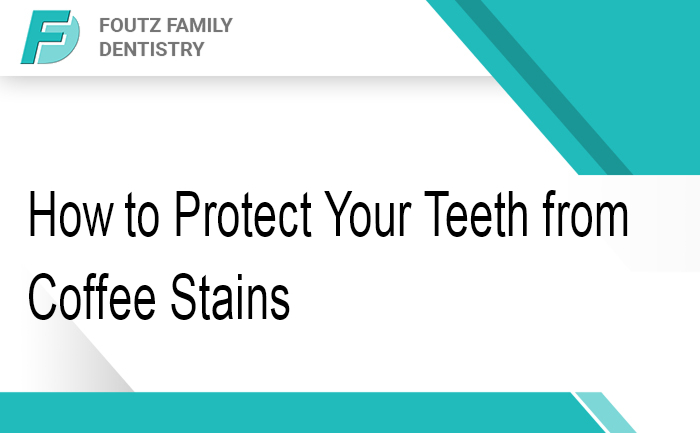That first morning cup of coffee does more than wake you up with a jolt of caffeine. It lingers, it comforts, and for many people, it’s a non-negotiable part of the day. However, while coffee fuels your focus, the deep brown color can leave behind stains on your teeth.
Coffee stains don’t appear overnight. They build up a little over time, dulling the sparkle of your smile until one day you realize your teeth look less white than they used to. The good news is that you don’t have to give up coffee to protect your teeth. With expert dental guidance, you can enjoy your everyday brew while keeping teeth bright.
Why Coffee Stains Your Teeth in the First Place
Coffee’s dark colors are packed with tannins, which are compounds that cling to smooth surfaces. Your enamel, though strong, is porous with subtle ridges where pigments can settle. To make things trickier, coffee is acidic, meaning your enamel is temporarily weakened to make it even easier for pigments to sink in and stick. That’s why frequent coffee drinkers often notice yellow or brown discolorations, especially near the front teeth where coffee flows between your lips first.
Even brushing twice daily doesn’t completely erase the effects of being a frequent coffee drinker. Once pigments seep in below the enamel, they become harder to remove. Ergo, prevention and maintenance are as important as whitening strategies.
Daily Habits That Help Prevent Staining
Small shifts in your coffee routine will keep stains under control. For instance, drinking water alongside your cup of coffee will help rinse pigments before they settle onto your enamel. Are you a fan of iced coffee? Use a straw to limit how much liquid touches your front teeth. Does it take you hours to finish a single cup of coffee? Finish your cup in one sitting to reduce exposure to coffee’s acidity.
Other daily habits to consider include:
- Avoid brushing immediately after coffee since enamel is softer and scrubbing can wear it down.
- Swish with water or chew sugar-free gum until you can brush later.
- Pair coffee with crunchy foods, like carrots or apple wedges, for a natural scrubbing effect that minimizes stains.
Professional vs. At-Home Whitening Options
Whitening is the best solution if stains have already built up. At-home strips and trays can brighten teeth gradually, though results will vary and they may not be as dramatic as you’d like. Whitening toothpastes can help maintain brightness too, but they rarely tackle deeper discoloration that’s penetrated the enamel.
Professional whitening is more powerful and delivers quicker, more noticeable results. One session can lighten your teeth by several shades, and most dental offices offer take-home trays for consistent, safe whitening over time. Professional care is worth the investment.
Long-Term Oral Care for Coffee Lovers
Consistency is essential for coffee drinkers who want to keep teeth healthy, white, and bright. Regular cleanings will help remove buildup, and an electric toothbrush and fluoride toothpaste will strengthen enamel to make it more resilient against coffee stains.
Contact Foutz Family Dental to explore teeth whitening options that allow you to keep your coffee ritual without sacrificing your smile.










 Dental hygiene is a matter that is continually taken for granted. Not a lot of people know that poor oral hygiene can lead to a wide range of other health disorders, making a commitment to maintaining the health of your teeth and gums is a necessary aspect of your health. Through routine dental check-ups and cleanings you are able to stop problems before they can become worse helping to prevent serious issues. Catching gum disease before it can affect a dental implant is a crucial benefit of routine dental cleanings.
Dental hygiene is a matter that is continually taken for granted. Not a lot of people know that poor oral hygiene can lead to a wide range of other health disorders, making a commitment to maintaining the health of your teeth and gums is a necessary aspect of your health. Through routine dental check-ups and cleanings you are able to stop problems before they can become worse helping to prevent serious issues. Catching gum disease before it can affect a dental implant is a crucial benefit of routine dental cleanings.


